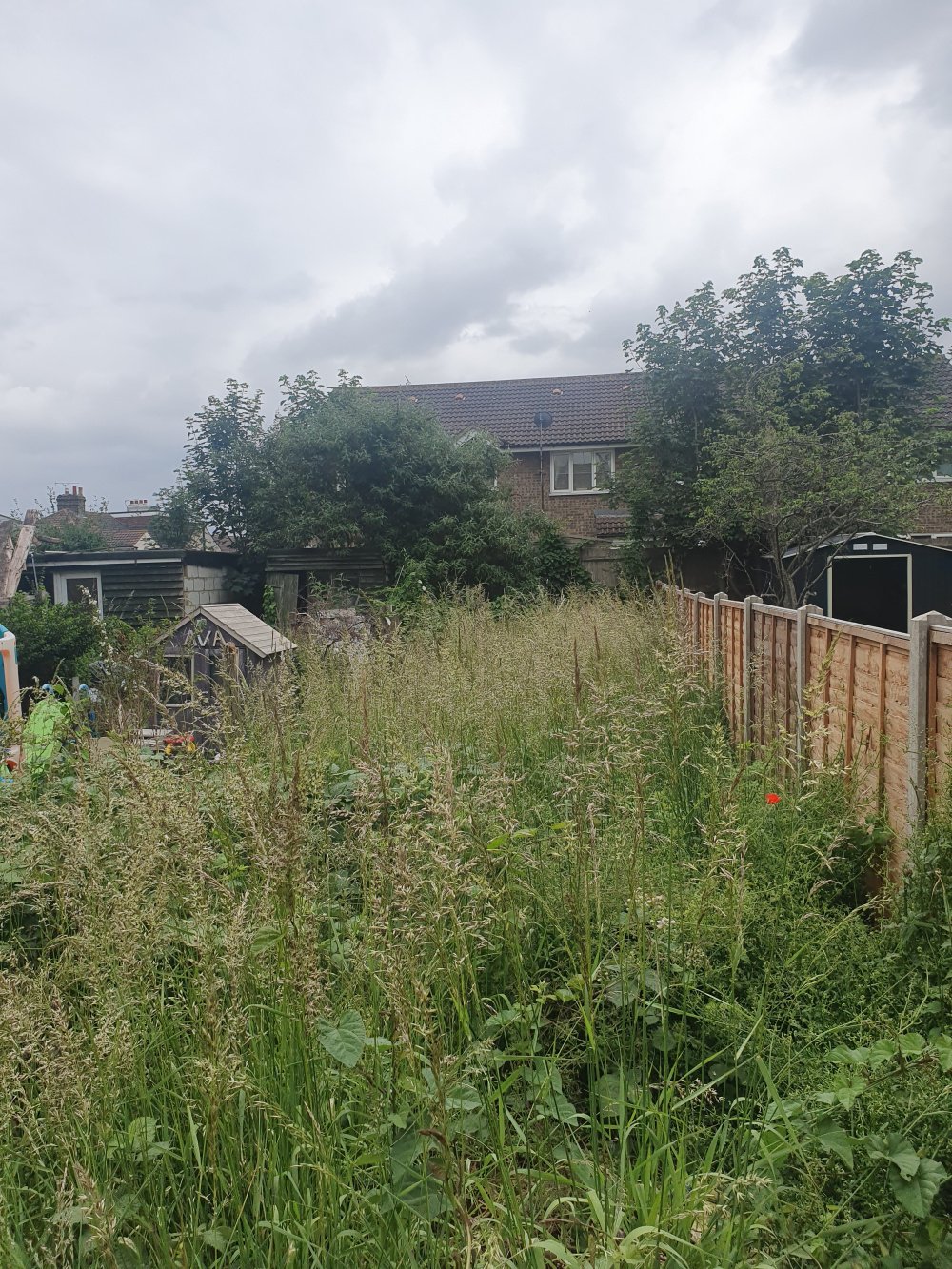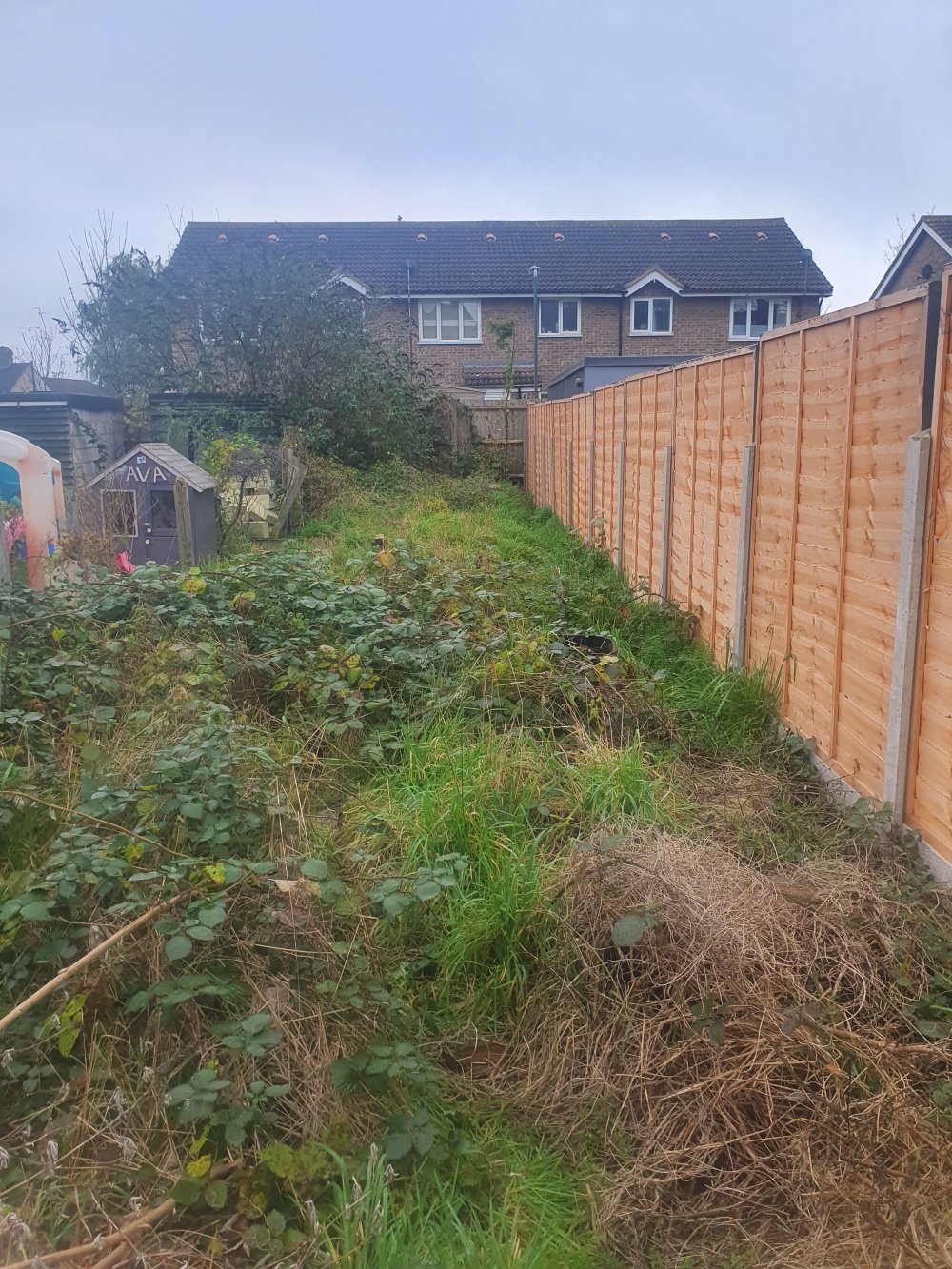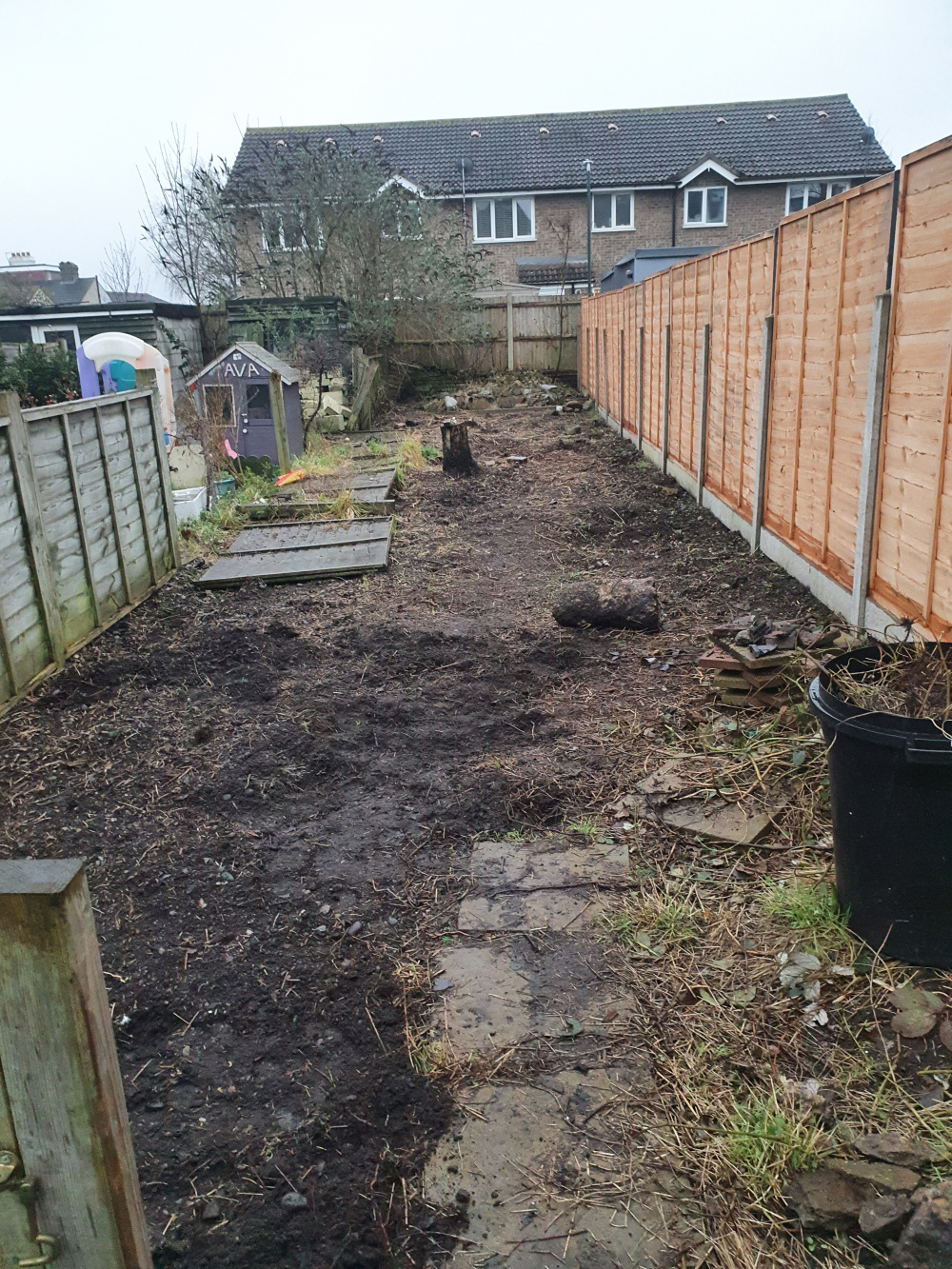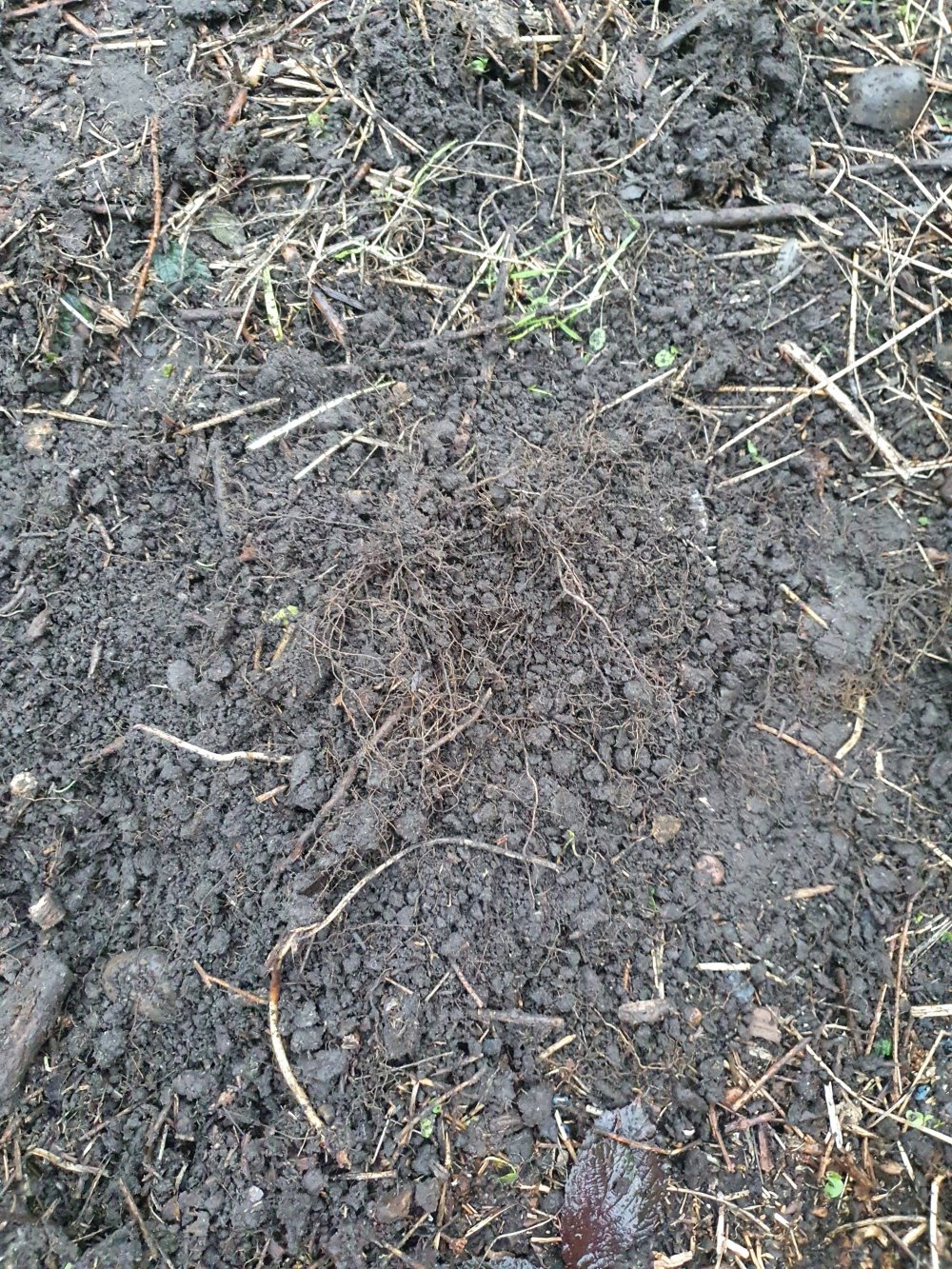This Forum will close on Wednesday 27 March, 2024. Please refer to the announcement on the Discussions page for further detail.
Clearing and restoring an overgrown garden
Hello all, I am quite new to gardening and am looking for some tips.
I have recently bought a house which has a very long (30m) but very neglected garden - I am reliably told that the previous owner, an elderly gentleman, never stepped foot out there except to dump stuff. So far that has proven true with all the rubble, old fences, roof tiles, broken glass and carpet uncovered!
I've been trying to clear the garden to the best of my abilities by cutting back and pulling up roots where possible with a fork and shovel. I'm new to identifying plants but I'm fairly certain from research we had lots of bramble (horrid thorny stuff that roots everywhere, even on a canvas bag!), bindweed and some form of weed grass (meadow grass?) that grows in big clumps. We first saw the house in summer where the garden was in full 'bloom' and having that comparison, plus the poor state of the garden, means I'm fairly certain there was nothing worth saving. I have 'razed' the garden so we have a blank slate to start with. Once we've got rid of visible weeds (mostly there!) we'll be raking the soil to disrupt the roots as much as possible and monitor weed growth from there. Coming across lots of glass and buried plastic so trying to remove that as much as possible - any tips here appreciated as a lot of plastic is in tiny bits that are hard to pick up. We've already made some good progress but I wanted to get more authoritative advice on next steps.
I'd rather avoid chemicals to ensure all the roots are dead, especially the bindweed as this keeps snapping and is everywhere, but with the size of the garden I'm not sure we have an option other than weedkiller? Is a rotavator worth hiring? There's a couple of tree stumps that I'm also not sure how to get rid of. A lot of the soil has roots in it (example attached) which worries me that something unwanted will grow but seems a waste to get rid of the soil clump?
The garden is south facing and geology of the area is sand and gravel, but I'm not sure of the soil type. Eventually, we'd like a seating area/patio, an allotment section to grow some fruit & veg and a bit of a lawn with some flower beds. Pics attached of June, the day we got the keys in November and progress up until now. Any tips much appreciated for this complete novice!



I have recently bought a house which has a very long (30m) but very neglected garden - I am reliably told that the previous owner, an elderly gentleman, never stepped foot out there except to dump stuff. So far that has proven true with all the rubble, old fences, roof tiles, broken glass and carpet uncovered!
I've been trying to clear the garden to the best of my abilities by cutting back and pulling up roots where possible with a fork and shovel. I'm new to identifying plants but I'm fairly certain from research we had lots of bramble (horrid thorny stuff that roots everywhere, even on a canvas bag!), bindweed and some form of weed grass (meadow grass?) that grows in big clumps. We first saw the house in summer where the garden was in full 'bloom' and having that comparison, plus the poor state of the garden, means I'm fairly certain there was nothing worth saving. I have 'razed' the garden so we have a blank slate to start with. Once we've got rid of visible weeds (mostly there!) we'll be raking the soil to disrupt the roots as much as possible and monitor weed growth from there. Coming across lots of glass and buried plastic so trying to remove that as much as possible - any tips here appreciated as a lot of plastic is in tiny bits that are hard to pick up. We've already made some good progress but I wanted to get more authoritative advice on next steps.
I'd rather avoid chemicals to ensure all the roots are dead, especially the bindweed as this keeps snapping and is everywhere, but with the size of the garden I'm not sure we have an option other than weedkiller? Is a rotavator worth hiring? There's a couple of tree stumps that I'm also not sure how to get rid of. A lot of the soil has roots in it (example attached) which worries me that something unwanted will grow but seems a waste to get rid of the soil clump?
The garden is south facing and geology of the area is sand and gravel, but I'm not sure of the soil type. Eventually, we'd like a seating area/patio, an allotment section to grow some fruit & veg and a bit of a lawn with some flower beds. Pics attached of June, the day we got the keys in November and progress up until now. Any tips much appreciated for this complete novice!




0
Posts
You can attempt to dig it out ( good luck with that ) or you can wait for it to grow and spray with glyphosate.
Where we wanted to have our greenhouse was full of the above plus bindweed. Once we’d cleared all weeds and had blank soil we did a blitz on the bindweed. We dug out a trench across the area about 18” deep and as we dug the soil out the we made sure we removed all the roots we could find (going deeper where needed) then moved forward until we had gone completely across the area (bit like the principle of double digging). Once done we left it for a couple of weeks then went through the whole area again. We filled two garden waste bins full of bindweed roots! But in the 3 years since we have had only had the very odd, weak bindweed shoot reappear - am guessing from seed- throughout the whole area.
We haven’t used any chemicals but you do have to accept it’s not an effortless job. My top tip would be not to leave soil bare as you are only inviting weeds to grow and more vigorously without any competition - so maybe a bigger lawn initially as suggested or vegetable crops, green manure and annuals and mulch will provide competition and cover and as short term crops mean you can then do a through dig and weed if needed at the end of the season.
East facing, top of a hill clay-loam, cultivated for centuries (7 years by me). Birmingham
I completely agree though, do the garden in sections, and dig each section thoroughly removing as mamy traces of weed root as possible. Might seem like hard work but it'll make life alot easier in the long run.
I would personally try remove as much of the weeds as possible by hand to start off with. If you can, and have the time, you can then try lay some wood, cardboard or light-blocking fabric over very problemetic areas. Weight it down and leave for a few months.
After this you could try rotavating if you wish, but i would just plant some grass whilst i wait and figure out any future plans. Grass does a pretty decent job of stopping other weeds growing compared to leaving it pure soil.
Of course this is only my own experience and choice. All the best
Millie
I agree with what most have said, one section at a time. It is so encouraging when you finish one little bit and it looks good, certainly keeps the motivation going. I have a little garden table and chair that I use at the end of the day to sit at and admire my work, after carefully arranging it so I am looking at a good bit (with blinkers on)
I would be very disinclined to use a rotavator too, it really does give the roots a much bigger chance of creating new plants. I did use one on a really tricky bit of bed when making a veggie patch, but I then went on my hands and knees for what seemed like days fishing out all the broken roots, even then weeks later little shoots came up. The only good thing was they were small and manageable, but it was a constant and long job. I think a good days work with the spade would have been better use of my time.
Good luck and so exciting to have a blank canvas to work with.